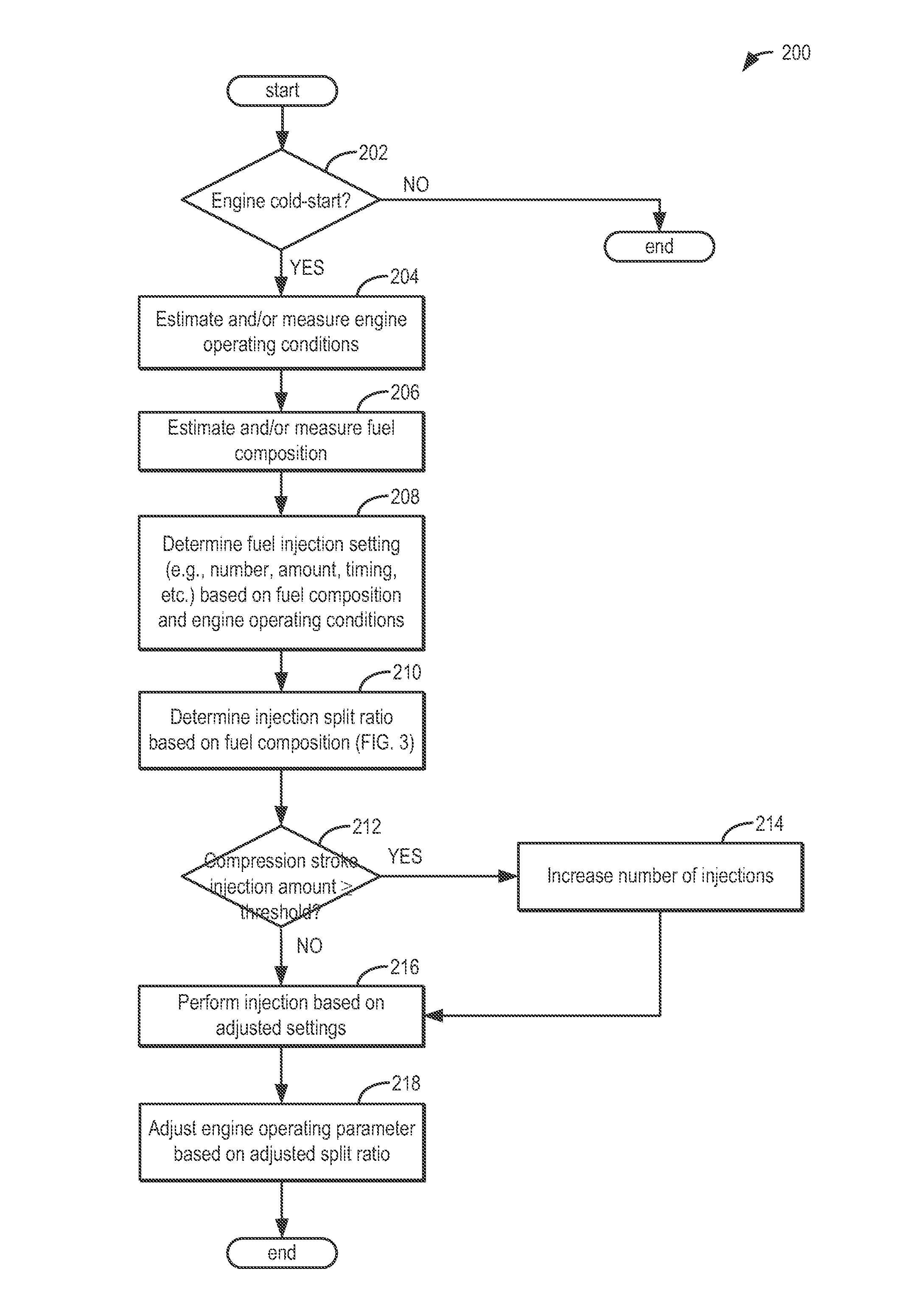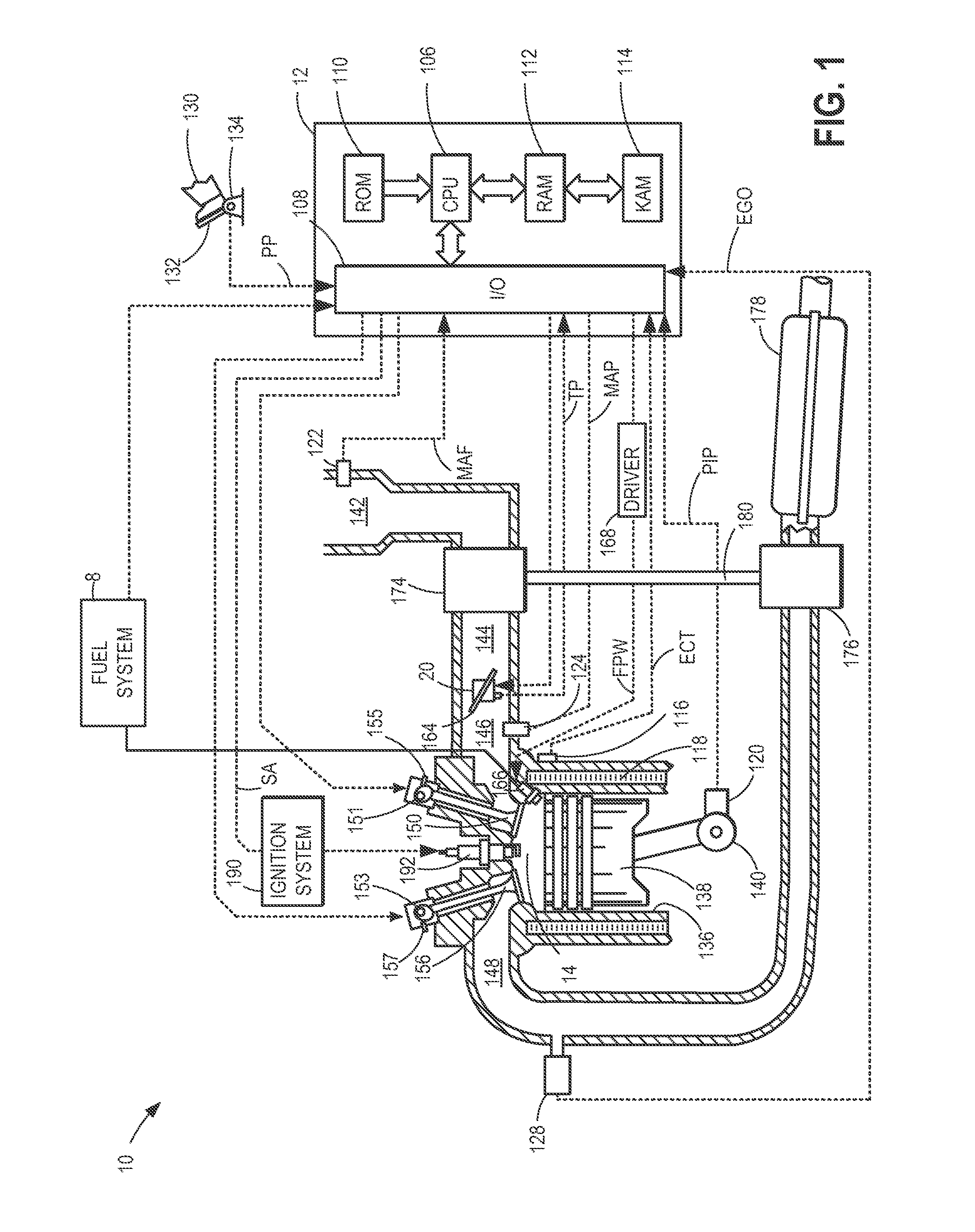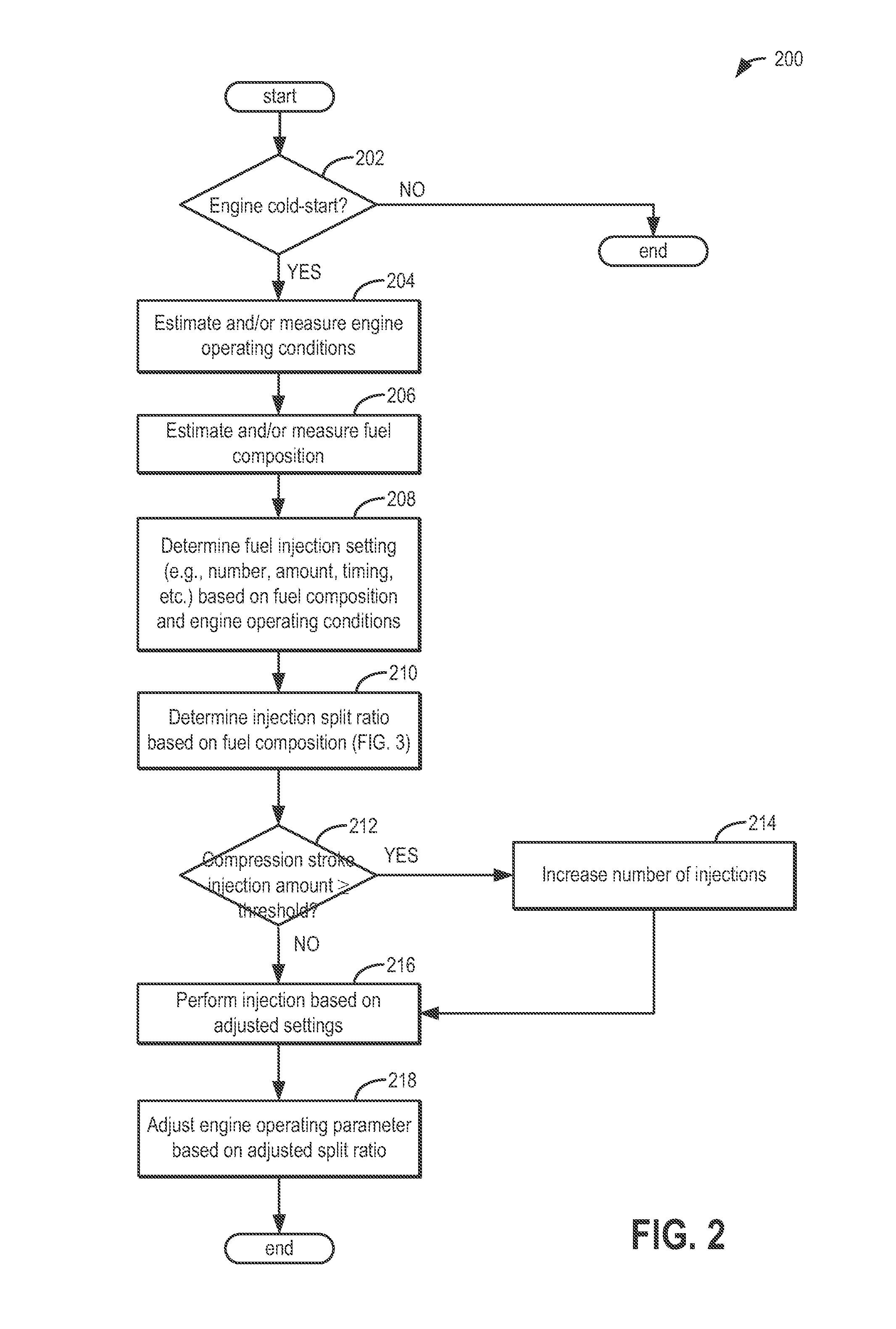Fuel-based injection control
a technology of injection control and fuel, applied in the direction of electrical control, process and machine control, etc., can solve the problems of reducing the efficiency of fuel evaporation and the formation of a homogeneous air-fuel mixture, further degrading fuel evaporation efficiency, and affecting engine startability, so as to reduce particulate matter emissions, reduce the number of compression stroke injections, and improve the ability to start with alcohol fuel
- Summary
- Abstract
- Description
- Claims
- Application Information
AI Technical Summary
Benefits of technology
Problems solved by technology
Method used
Image
Examples
Embodiment Construction
[0015]The following description relates to systems and methods for improving an engine's ability to start with alcohol based fuels (such as the engine of FIG. 1) at ambient temperatures (cold-start). An engine controller may be configured to perform a control routine, such as depicted in FIG. 2, during an engine cold start, to adjust the split ratio of the amount of fuel injected during an intake stroke to an amount injected during a compression stroke of the engine responsive to the fuel composition, for example, the fuel alcohol content. By decreasing the ratio of intake stroke fuel to compression stroke fuel as the fuel alcohol content increases, as depicted in FIGS. 3-4, fuel evaporation and formation of a homogeneous air-fuel mixture at cold-start may be improved, without the need for pilot fuel injections. By reducing fuel losses incurred during cold-start, the fuel efficiency and quality of vehicle cold-start exhaust emissions may be significantly improved.
[0016]FIG. 1 depict...
PUM
 Login to View More
Login to View More Abstract
Description
Claims
Application Information
 Login to View More
Login to View More - R&D
- Intellectual Property
- Life Sciences
- Materials
- Tech Scout
- Unparalleled Data Quality
- Higher Quality Content
- 60% Fewer Hallucinations
Browse by: Latest US Patents, China's latest patents, Technical Efficacy Thesaurus, Application Domain, Technology Topic, Popular Technical Reports.
© 2025 PatSnap. All rights reserved.Legal|Privacy policy|Modern Slavery Act Transparency Statement|Sitemap|About US| Contact US: help@patsnap.com



